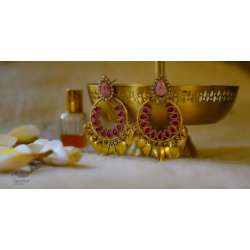- Availability: 1
- Made & Mkt by: Meharaab
- Product Code: 3988-KSE-MEH34
- Weight: 36.00g
The typical dispatch time is 2-3 days; however, in special cases, it may take longer. Please refer to the product details section for specific timelines. Once dispatched, we will share the tracking details with you.
For returns, you can file a request within 24 hours of receiving the product. If the package is damaged, please make a video while unboxing and share images of the damaged item along with your return request.
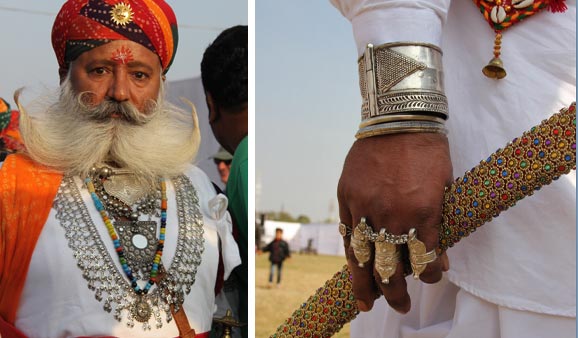
Gold and silver ornaments have been a part of daily lives of Indian women since the beginning. Out of them, people of Rajasthan hold a mentionably special place. While the rich wear gold ornaments studded with diamonds, emeralds and rubies, others wear heavily worked silver ornaments. Women of Gayari, Mina and Bhil tribes wear brass ornaments made by a community called Bharawa. Rabaris of Sirohi region, Raikas of Jodhpur & Bhats of Sri Ganganagar wear heavy silver jewellery, often studded with colorful glass pieces. These have charming patterns based on sun, moon and flowers, seeds and leaves found in the region. Besides metal jewellery, the state is also proficient in the art of making lac jewellery which is often decorated with small glass pieces. In South Rajasthan, women wear bangles made of coconut shell. There is also a very strong religious and social significance they hold. The jewellery is passed on from one generation to another as heirloom and women preferably adorn themselves from head to toes. It is considered auspicious and is a symbol of prosperity. Married women especially wear maximum jewellery according to their economic status;- silver, gold, gilt and bronze ...
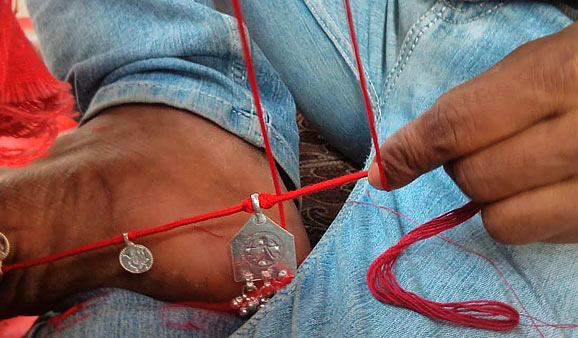
Jewellery in Rajasthan goes beyond being ornaments and is much like coverings with beautiful textures. They are a manifestation of a refined design sensitivity and skill that has evolved over many centuries. Different ornamentations for head, neck, forehead, ear, arms, ankles, feet and waist are as follows:
> Nose- Nathali, long and Kanta ,
> Ear- Surliya, long and Sankali
> Neck- Noshar Necklace, Tevta, Timaiya, Ard, Hamel Necklace, Gulsari, Madalia
> Arms- Bajubandh, Baju, Batta
> Hands- Bagdi, Poonji, Gold bangles, Chuda
> Palms- Hathphool
> Fingers- Rings
> Waist-Tagdi
> Head- Rakdi, Borla, Tika, Tildi, Baser
> Ankles- Takane Kanduji, Jhanzaria, Tule, Panjaniya, Jodh
> Toes- Bichuvae, Chitki

Anklets (gughari) with chains to which many tiny square bells (caurasi) are attached make alluring tinkering sounds. Many folk poems have been dedicated to a lover's heightened anticipation for his beloved upon hearing the tinkling sound of her approaching footstep. The heavy silver chudas (armlet) are worn because they sparkle in the sunlight, they are thought to be particularly captivating.
Rajasthan has been blessed by many wandering tribes that have contributed to the gamut of colorful and rich culture it has. The Bhats derive their name from the Sanskrit word bhatta, meaning a lord. They further state that the Bhat "are an offshoot of Brahmins, their name being merely a corruption of the term Brahmin.” The ancient epic of Mahabharata speaks of a band of Brahmin bards marching in front of the victorious king. The Bhat originated in Rajputana (an old name for Rajasthan) and later migrated to the adjoining states after the downfall of the kingdoms. Rai, Bandh and Bharata are some of their titles. Their women are their moving bank accounts. They invest money in jewellery made of silver for their woman - rings, pajeb, bangles, hairpins, kanchli, borla, heavy armlets and anklets. The community is now mainly settled agriculturist, although many are still herdsmen.
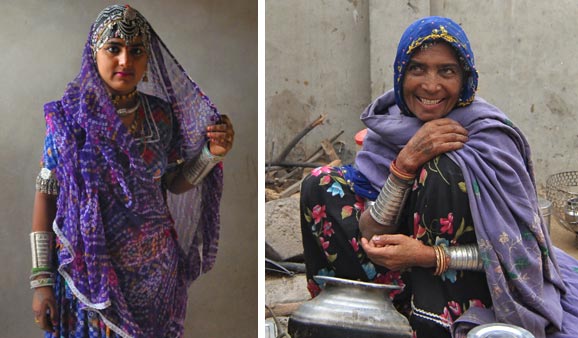
The Bhils living in the hilly tracts of Arawali around Chittaurgarh, Banswara and Dungarpur are an authentic primitive tribe. Their way of life continues to be very colourful, but it is also an anachronism, since it dates back by several centuries. Several Bhil tribes have been mentioned in epics like the Mahabharata as warriors. They are characterised by curly hair, dark skin, broad nose, and short & robust structure. Although restrained in their dressing, the Bhils, especially the women, have a great affinity for jewellery made of horn, lac, silver and copper: the bor, jhela, pande or kanphools and the tussi or bazar batti. The bor is a ball shaped silver ornament worn over the forehead, the jhela is an intricate head ornament worn from top to the sides above the ear, the pande consist of three small earrings worn on the outer part of the earlobes and bangles.
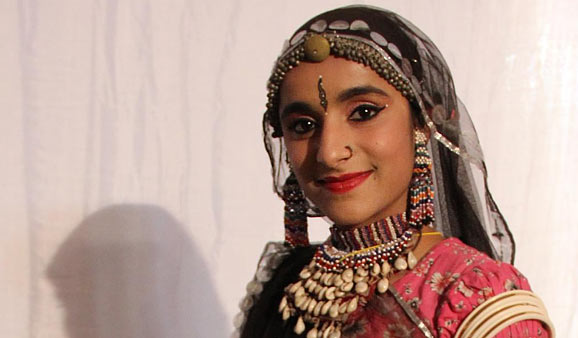
The Minas are the second largest tribal group in Rajasthan after the Bhils and are most wide spread. The name Mina is derived from meen or fish and they claim discend from the fish incarnation of Vishnu. Originally they were a ruling tribe but their downfall began with the Rajputs and was completed when the British government declared them a criminal tribe in 1924. Their culture was by this time more or less destroyed and they were given protection as a Scheduled Tribe in independent India. With the withdrawal of the Criminal Tribes Act, the Minas took to agriculture. Other nomadic sub-groups include the Nayaks who are entertainers, Kanjars, Sansis, Nats and the Kalbeliyas, the last groups of snake charmers. The Gujars have for long inhabited the tract in the north of the Aravallis, stretching from Bikaner to Bharatpur and Jaipur regions, where they are cultivators, cattle breeders and herdsmen. They are also located in Ajmer region and in the Mewar plains beyond. They are found in large numbers in the northern part of Karauli region.
The tribals are believed to be the original inhabitants of the hilly tracts of the desert. They have also earned themselves a great name for their skills at both warfare and the zest with which they celebrate their festivals and conduct their lives. Listed as criminal tribes by the British, it is only now that the true representation of these people has begun to surface. The Rabaris are still nomadic, an equally colourful sub-group, that still travels over the desert in search of pastures for their sheep and camels. The story has it that their ancestor was brought into existence by Lord Mahadeva in order to tend the first camel, which had just been created by Parvati for her amusement. Their two main divisions are Menu and Chalkais. The former deals only in camels and occupies a superior position to that of the latter. They can marry the daughters of Chalkias without giving their own in return. The Chalkias keep larger herds of sheep and goats.
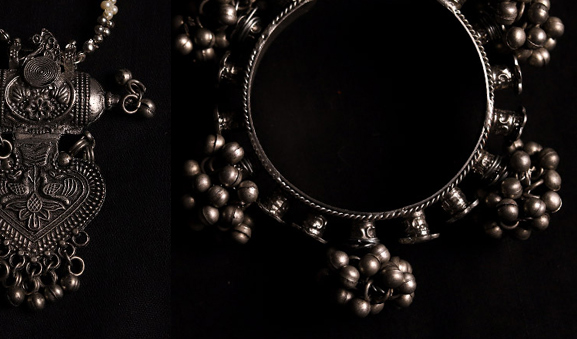
Raika farmers called Dhanies are scattered over the countryside. These people have very few worldly possessions. For most of their cooking and eating, they use earthen pots. A butter churn is always an important item in their houses. Clothing is simple, though colourful, particularly where the women are concerned. The owner of the farm wears a khadi dhoti and turban. He sports a pair of gold earrings. His sons, comely lads, are dressed the same way but have coloured turbans (a white turban is worn when one's father is no more). They wear cheap silver anklets, earrings and necklaces. The hair is cropped close from (sic) the forehead. The housewife wears silver ornaments. Her arms are covered with light ivory bangles. A black skirt, a red kanchli (blouse) and a deep red odhni constitutes her dress. The kanchli is a quarter-sleeved bodice covering only the front and tied with strings at the back. An unmarried girl wears a skirt along with a kurta. Everyone wears shoes, as walking barefoot on hot sand is almost impossible.
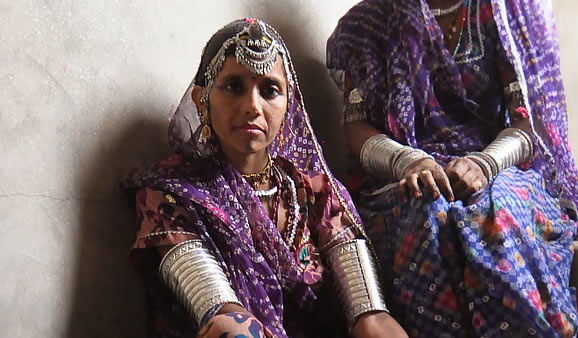
The Gavaria is a community traditionally associated with rope making in the countryside. Their community life is strictly governed by their panchayats whose decisions are mandatory. The consolidated panchayat of the whole region functions as their Supreme Court which sits in a grand style in a circular ring to hear the appeals from the lower panchayats. Its decisions are the last word for the members of the community. While the males mostly look after the rope-making activity, the females attend to its marketing. The women folk can be seen moving from one village to another with a pony and a typical basket in which they keep their merchandise - mainly ropes and small articles like mirrors, combs, bangles and tiny trinkets. The basket called Odi is an important item amongst the household goods, an article which the parents must give to their daughter at the time of her wedding. A closely knit community, their marriages are generally contracted through what is called the 'ata-sata' system wherein the daughter of a family is married in the same family as the son.
The Banjaras are nomadic caravan runners who travel with balaads or oxen-laden caravans and continue travelling wherever their caravans are in demand. In the past, it was not unusual to have bullock-caravans of thousands. There is also a mention of lakhi or one hundred thousand bullocks leading a caravan. Since they performed a very important role, armies rarely troubled these Banjara caravans. Modern means of transport have robbed them of their livelihood and they have now settled into a semi-nomadic existence, using whatever resources they command - doing odd jobs, entertaining, even farming to draw a living.
| Craftsmen | |
| Made by | Artisans working with Crayons |
| Village | handcrafted by the Craftsmen of Jaipur. |
| Returns and Exchange | |
| Note | - We do not accept returns or exchange of the products listed in this category. for any damage, We will fix it and send it back. - Delivery in 4-5 days |
| Material | |
| Made of | 92.5% of Silver with an antique gold polish |
| Instruction | |
| Note | ♦ Imperfections and variations in the product cannot be termed as defects, as these are intrinsic to the handmade process. ♦ These might slightly differ from as seen on digital screen. |
| Restrictions | |
| COD - Option | Not Available |
| International Shipping | Not Available |









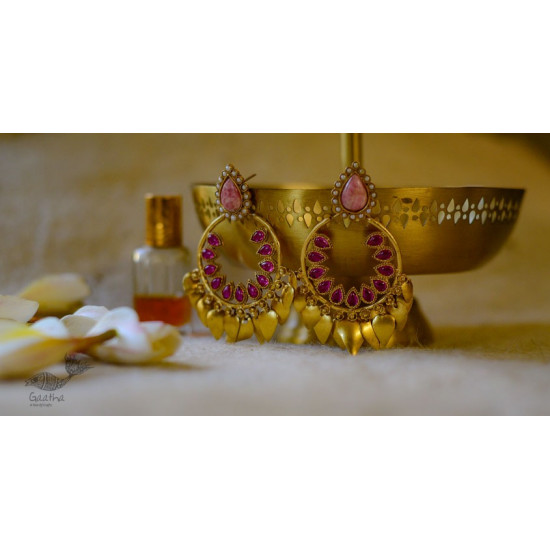

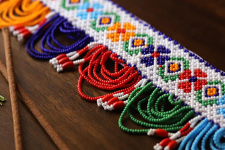
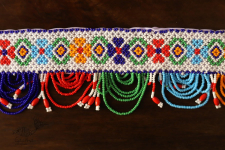
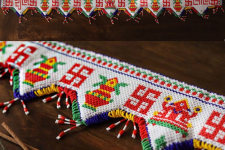
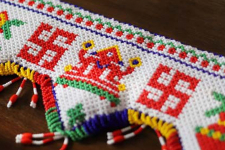
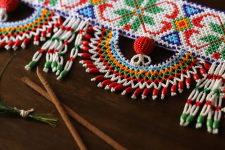
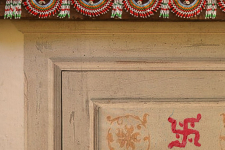
-225x150w.jpg)
-225x150w.jpg)
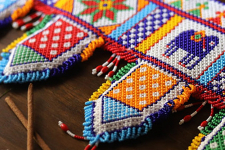
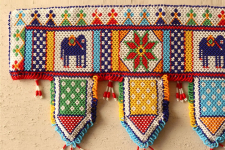
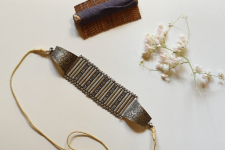
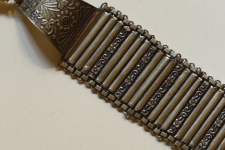
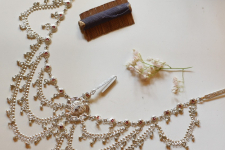
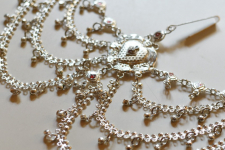
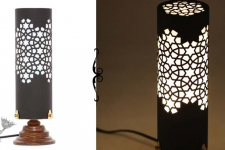
_3-(1)-225x150w.jpg)


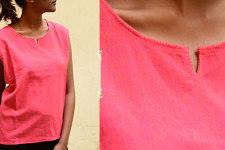
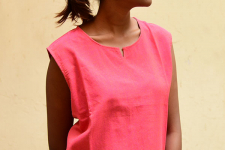
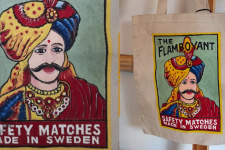
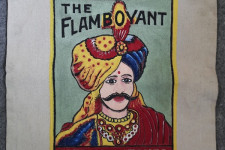
/17_05_2023/Gond-Art-Hand-Painted-Gond-Painting-Peahen-Peacock-2-225x150h.jpg)
/17_05_2023/42-1-225x150w.jpg)
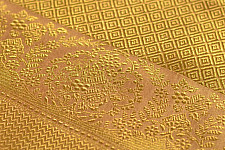
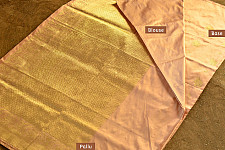
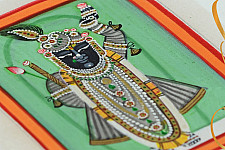
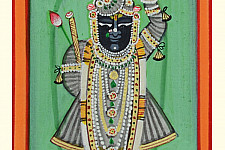









-225x150w.jpg)

-225x150w.jpg)

-225x150w.jpg)
